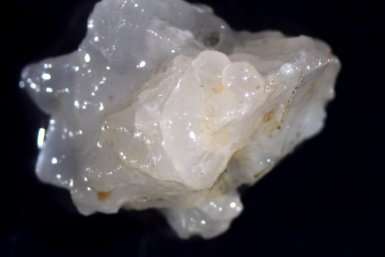Tons of nanoplastic are floating in the Wadden Sea

About 20 tons of polystyrene and another 5 tons of PET is floating in the Wadden Sea, in the form of invisible nano and micro particles. That's the figure UU and NIOZ researchers calculate this month in the journal Science of the Total Environment.
"If you extrapolate these numbers to the rest of the seas and oceans, this adds up to a substantial part of the plastic that science had 'lost' in the world's oceans." The Wadden Sea is the UNESCO-recognized tidal area along the southeastern edge of the North Sea, along the coast of the Netherlands, Germany and Denmark.
New analysis
Researchers Dušan Materić and Rupert Holzinger from Utrecht University (UU) together with Helge Niemann from the NIOZ Royal Netherlands Institute for Sea Research, applied their new analysis technique to the water of the Wadden Sea. They also analyzed the residue that remained on a filter when the Wadden Sea water was filtered through different mesh sizes.
Of particles up to 200 nanometers in size, the researchers found the equivalent of 4.2 micrograms per liter of Wadden Sea water. Of the slightly larger particles, from 300 nanometers to 2.7 micrometers, they found 3.1 micrograms per liter. "This is an amount of two dinner spoons of nanoplastic for each Olympic swimming pool," says Dušan Materić from the Institute for Marine and Atmopheric research Utrecht. "For the whole of the Wadden Sea, that would be thousands of kilograms of plastic."
Vanished plastic
This research puts an important piece in the jigsaw of vanished plastics. Materić: "Of all plastics that disappear into the environment, 99% cannot be recovered. We have now shown that a substantial part of this 'disappeared plastic' is floating in the oceans as nanoparticles."
"Microplastics are large enough to float or sink, depending on the specific relative mass of the materials," says Niemann, who, in addition to being a researcher at NIOZ, is also professor of Microbial and isotopic biogeochemistry in the Earth Sciences Department at the UU. "Nanoplastics are so small that they become suspended in the entire water column. So, all the fish and other organisms in the Wadden Sea may encounter these particles."
Effects
With concentrations of less than 10 micrograms of polystyrene per liter of Wadden Sea water and less than 5 micrograms of PET per liter, it is difficult to say anything about the effects on the environment, the researchers believe. Ecotoxicological studies are usually done with concentrations that are more than ten thousand times higher (around 100 milligrams per liter).
Nevertheless, there are indications that the concentrations as found in the Wadden Sea may have ecological consequences. For example, other studies have shown that nanoparticles of polystyrene at a concentration of 1 microgram per liter, cause a decrease in swimming speed of algae and rotifers. The metabolism of diatoms was measurably changed under the influence of 0.1 micrograms per liter of polystyrene, and the growth of dinoflagellates also measurably decreased from a concentration of only 10 micrograms per liter of seawater.
Measure more
Thermal Desorption—Proton Transfer Reaction—Mass Spectrometry is an analytical technique in which particles in a sample are heated until they "evaporate." Then, using a highly accurate mass spectrometer, the nature and the quantity of the plastic molecules can be determined. "In samples of seawater, there are many different, microscopically small particles," Niemann emphasizes. "This study was the first in which the nanoplastics among those particles from seawater can be identified and quantified with this technique."
The researchers did their measurements on samples from only two locations in the Wadden Sea. "It is therefore important that we collect and analyze many more samples from many more locations in different seas and oceans for a reliable picture of the amount of nanoplastic in the water," Niemann stresses.
More information: Dušan Materić et al, Nanoplastics and ultrafine microplastic in the Dutch Wadden Sea—The hidden plastics debris?, Science of The Total Environment (2022). DOI: 10.1016/j.scitotenv.2022.157371
Journal information: Science of the Total Environment
Provided by Utrecht University




















